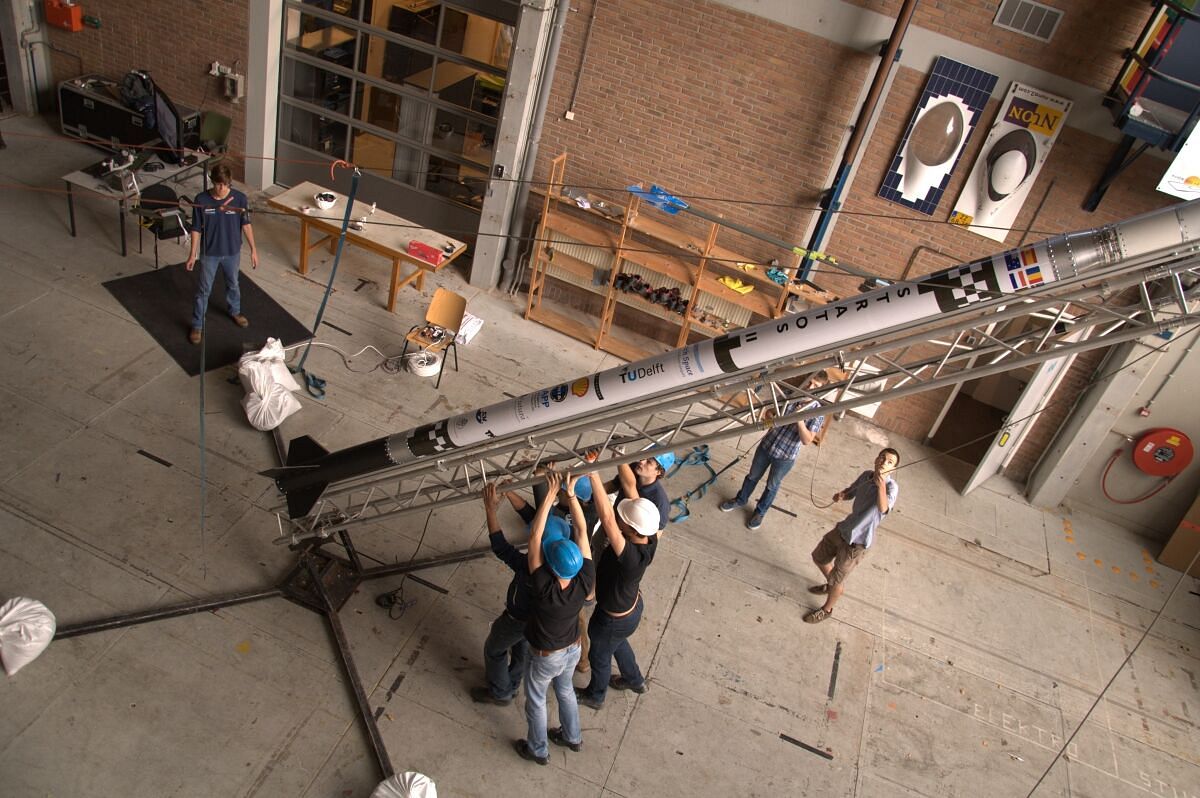Students from DARE (Delft Aerospace Rocket Engineering) have redesigned the Stratos II rocket, aiming for a 50-kilometre altitude. They’re preparing for a launch in Spain between 13-15 October 2015.
About a year ago, DARE also went to the CEDEA launch range in Spain for experimental rockets. But at the last attempt the rocket didn’t move since the main oxidiser valve was frozen due to a leak in the tank that kept 80 kilogram of N2O stored at 60 bar. Because the oxidiser couldn’t reach the solid fuel at the other end of the motor coupler, ignition didn’t take place. Misfire, misfire, was the message. The students felt down for a couple of hours and then decided to analyse what went wrong, learn from the mistakes and improve the design of the rocket now called Stratos II+.
The 2009 DARE team flew the Stratos I rocket to 12.5-kilometre altitude and set a new European record for self-built rockets. After that, the team aimed for the stars with the Stratos II rocket that should be able to reach the edge of space at 50-kilometre height.
After nearly a year of preparation, the team presented their revised rocket at a meeting at the Faculty of Aerospace Engineering last Thursday. The two major improvements, said project manager and AE student Jeroen Wink, had been the Flight Termination System (FTS) and the motor coupler (the valves and controls between oxidiser tank and the solid fuel.
The Flight Termination System is a security system that aborts the flight in case something goes wrong or when the rocket deviates too far from its projected trajectory. Last year’s FTS had some glitches and had been more or less glued to the rocket. The team decided for a complete redesign and a better integration of the system with the rocket.


The motor coupler was also completely renewed. It houses the valves to fuel the tank and to release the oxidiser onto the solid fuel after ignition. AE student Ralph Huijsman, who led the motor redesign gave some characteristics. The temperature in the combustion chamber reaches 3000 Celsius, the burn should last for 20 seconds while producing a thrust of 10,000 Newton. That’s what it takes to launch the 200-kilogram rocket to 50 kilometres.
The last moto test at TNO Rijswijk was exemplary. But is one successful test convincing enough? External Relations officer Bastian Bom thinks it is: “Of course we would have liked to do more tests. But we have to balance the extra costs and efforts to the possible gain in trust. We have tackled last year’s problem and the test confirmed the engine’s performance.”
The team is now preparing for the launch in Spain when the efforts of over 40 students over the last four years will be on the launchpad. Watch for updates on the DARE website.



Comments are closed.